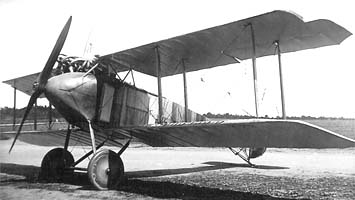Fokker D.IV
| D.IV | |
|---|---|

| |
| Role | Fighter |
| Manufacturer | Fokker |
| Designer | Martin Kreutzer |
| Introduction | 1916[1] |
| Primary users | German Army Swedish Air Force |
| Number built | 44 |
The Fokker D.IV was a German fighter biplane of World War I, a development of the D.I.[2][3]
Development
The Fokker D.IV had a more powerful Mercedes D.III engine, and the first Fokker front-line design to use ailerons in place of wing warping from the start for roll control.[4]
Operational history
The aircraft was purchased in small numbers (40) by the German Army and the Swedish Air Force bought four examples of the type.[1][5]
Operators
- Luftstreitkrafte - 40 aircraft.
- Swedish Air Force - Four aircraft.
Specifications
General characteristics
- Crew: one pilot
Performance
References
Wikimedia Commons has media related to Fokker D.IV.
Notes
Bibliography
- Green, William and Gordon Swanborough. The Complete Book of Fighters. London: Greenwich Editions, 1994. ISBN 0-8317-3939-8.
- Lamberton, W. M. Fighter Aircraft of the 1914-1918 War. Letchworth, Herts, UK: Harleyford Publications Limited, 1960.
- Taylor, Michael J. H. Jane's Encyclopedia of Aviation. London: Studio Editions, 1989. ISBN 0-517-69186-8.
- Wagner, Ray and Heinz Nowarra. German Combat Planes: A Comprehensive Survey and History of the Development of German Military Aircraft from 1914 to 1945. New York: Doubleday, 1971.
- World Aircraft Information Files: File 894 Sheet 40–41. London: Bright Star Publishing, 1989.
